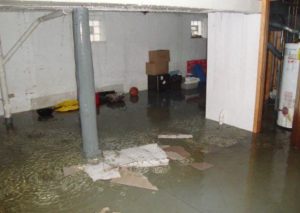Windows
Windows can perfectly accent a home while keeping energy use to a minimum. But even the best windows can be improperly sealed and allow water in. Even if you haven’t noticed any dampness on your sill after a storm, you can check if your windows are closing properly by placing your hand where it closes. If you notice any drafts while the window is completely shut, you may need to call in a professional.
Your Shower
Over time the caulking in your shower breaks down and can become brittle. Examine the seal in your shower for weak points where damage can occur, but also check around the outside. If the caulking is leaking, water can seep out into the rest of your bathroom and get under flooring and walls.
Base Molding
Water damage around the base molding in your bathroom can be trickier to spot since it’s glued to the wall. The moisture from your bath or shower can soak into the paneling and cause damage from behind. Look for loose points in the panel as well as discoloration or mold by contact points. A good way to prevent damage to your molding is to ensure your bathroom is well ventilated with a fan or open window.
Beneath Your Kitchen Sink
The cabinet below your kitchen sink is the perfect environment for mold and water damage. It’s warm, humid and stagnant. Damage can occur without a leak due to these conditions, but a leak from the caulking or a loose washer will accelerate the process. Try not to overcrowd the cabinet and check under stored items for damage.
By Your Refrigerator
It’s easy to notice when condensation pools up inside your refrigerator, but a less-obvious hazard is water underneath it. Drips from a leaky freezer, broken ice cube maker or damaged hose can cause water to pool beneath your refrigerator. When you mop, take a quick peek for any leaks.
Around Your Toilet
Water damage doesn’t just occur when your toilet overflows. It can happen methodically over time—and with the toilet’s proximity to the shower, it can be hard to spot a what’s a leak and what’s from your shower. Toilets can leak from loose hoses, through old caulking and even cracks in the bowl, so check these places if you notice some extra water.
The Washer Drain
As with any hose, a puncture can turn an otherwise reliable machine into a leaky mess. Day-to-day use of your washer can cause a cracked hose or for the drain hole to come loose or come out. From time to time, grab a flashlight or pull the washer out slightly to make sure it’s secure. It’s not the most glamorous job, but you might find a few missing socks, too.

